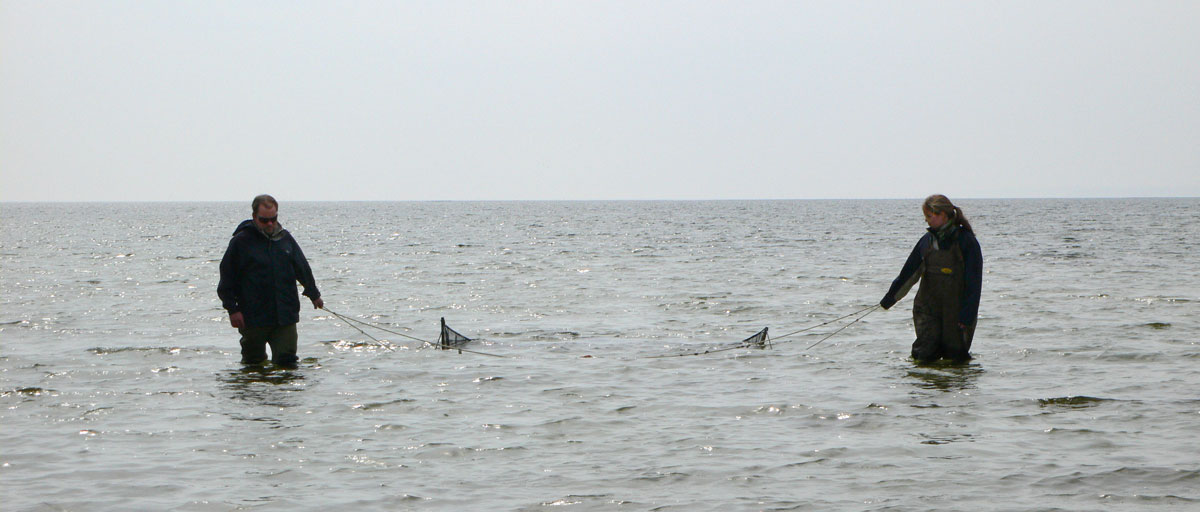
A new study shows that the future of the Baltic Sea ecosystem is largely down to how it will be managed even if climate change sets some limits to possible outcomes. Photo: G. Almqvist/Azote
Baltic Sea
Get the management right
Regardless of climate change, quality of management likely to determine Baltic Sea future
- Modelling framework developed focuses on how climate change, nutrient loads and cod fishing may affect the future of the open Central Baltic Sea food web
- New food web model, BaltProWeb, describes past and projects future dynamics from 2010 to 2098
- The future of Baltic Sea food web will largely be determined by management strategies
By marine geophysical standards it's still young, but the Baltic Sea is already marked by a life living under severe pressure. The effects of persistent eutrophication, intensive fishing and a fast rate of warming has reduced the Baltic Sea to one of the most heavily affected marine ecosystems in the world.
In a new study published in Global Change Biology, centre researchers Susa Niiranen, Johanna Yletyinen and Thorsten Blenckner, together with colleagues from Norway, Sweden, Denmark and Germany, have used a new and unique modelling framework to project how the interaction of climate change, nutrient loads and cod fishing may affect the future of the open Central Baltic Sea food web.
The results provide interesting perspectives on the future of the Baltic Sea.
21st century flux
Niiranen and her colleagues discovered that the future of the Baltic Sea ecosystem is largely down to how it will be managed even if climate change sets some limits to possible outcomes.
By the end of the 21st century, for example, their model revealed that a combination of intensive cod fishing and high nutrient loads is likely to lead to a strongly eutrophicated and sprat-dominated ecosystem, whereas low cod fishing combined with low nutrient loads would lead to a more cod-dominated ecosystem where the eutrophication levels remain close to what they are today.
The multimodel approach used in the new study included state-of-the -art regional climate scenario projections and three future nutrient load scenarios. Their ecosystem effects were analysed in a so-called Ecopath with Ecosim food web model in combination with two different cod fishing scenarios.
"With every modelling effort there is always a level of uncertainty, but our results indicate a risk of abrupt ecosystem changes and higher variability in the system in case the nutrient loads are not reduced," Niiranen says.
A model for the future
Food web responses to the combined effects of fishing, nutrient loads and climate were tested for the past (1974-2006) and projected into the future (2010-2098). A new food web model called BaltProWeb was then developed to describe past food web dynamics and projecting future (2010-2098) dynamics.
Combining the data, the researchers found that organism groups at the bottom and top of the food web responded differently to changes in nutrient loads and cod fishing. The response time of the Baltic Sea ecosystem to nutrient reductions was projected to be between 30-40 years while the effects of changes in cod fishing would be seen already after five to ten years.
Whatever the outcome, the study provides fresh perspectives on how the Baltic Sea should be managed in the future.
"Our work shows the importance of using models and scenarios in marine resource management. Not only do they provide crucial insights into specific ecosystems responses, they also demonstrate the importance of shifting to an ecosystem-based management where interactions within an ecosystem, including humans, are more closely considered, " Niiranen concludes.
"The results show that regardless of climate change, the management of nutrient loads and cod fishing are likely to largely determine the food web dynamics in the future Baltic Sea"
Susa Niiranen, lead author
Citation
Niiranen S., Yletyinen J., Tomczak M. T., Blenckner T., Hjerne O., MacKenzie B., Müller-Karulis B., Neumann T. and Meier H. E. M. (2013, published online). Combined effects of global climate change and regional ecosystem drivers on an exploited marine food web. Global Change Biology, doi: 10.1111/gcb.12309
Susa Niiranen's research focuses on the Baltic Sea food web dynamics and their response to changes in environmental and anthropogenic forcing. Food web modeling is one of the main tools employed in this study.






